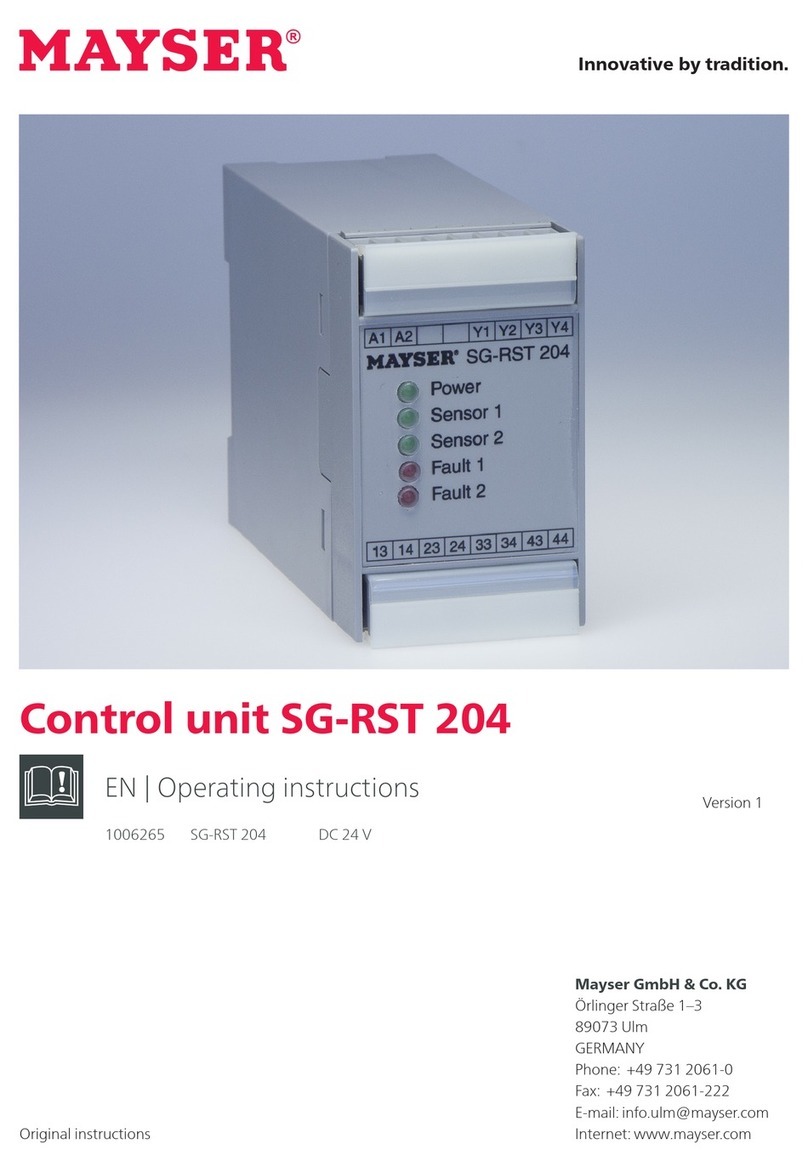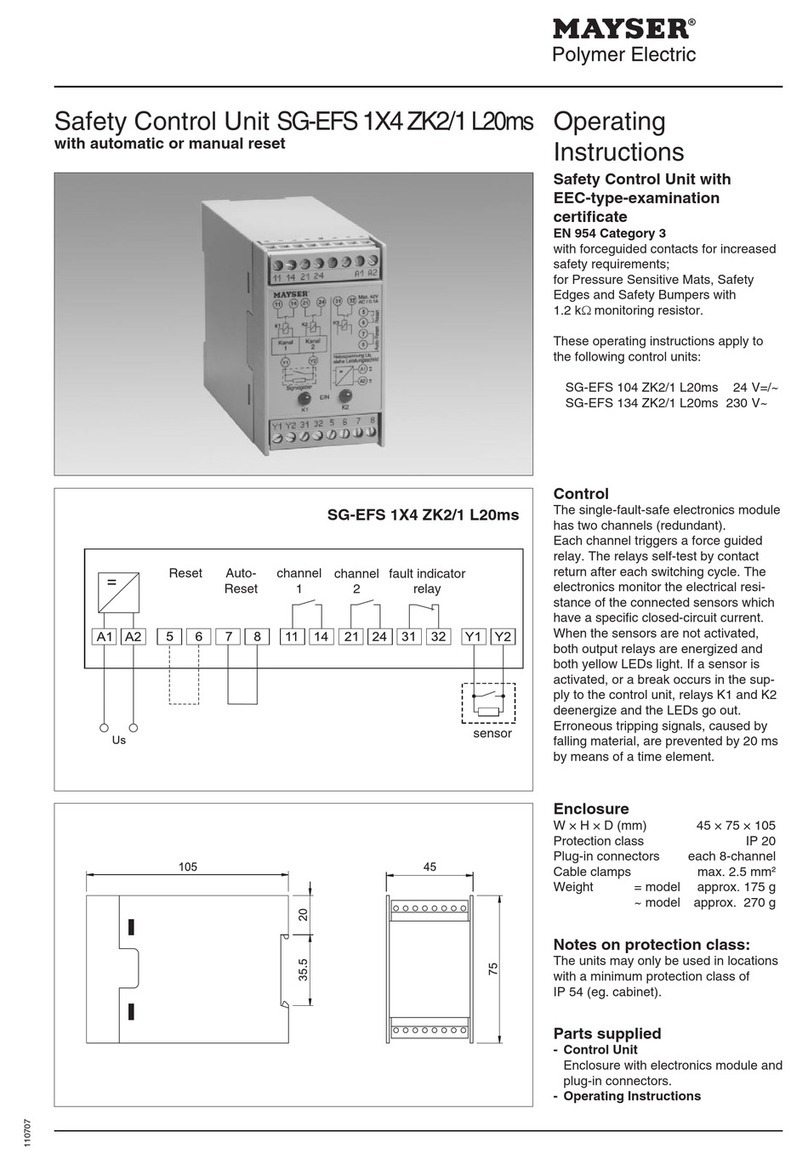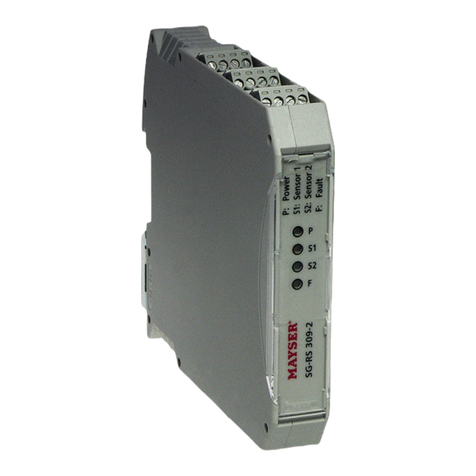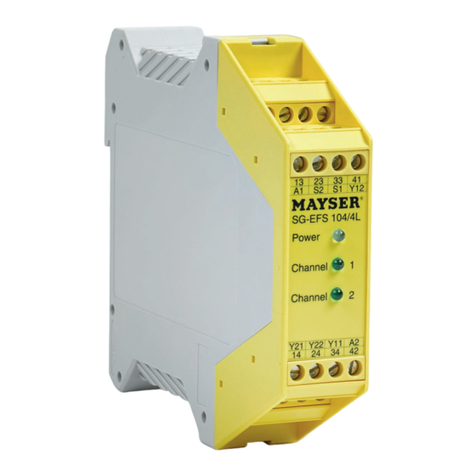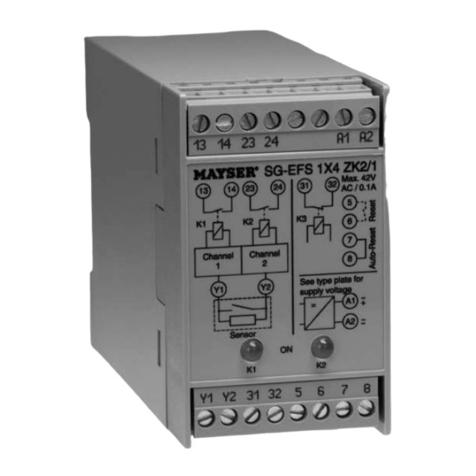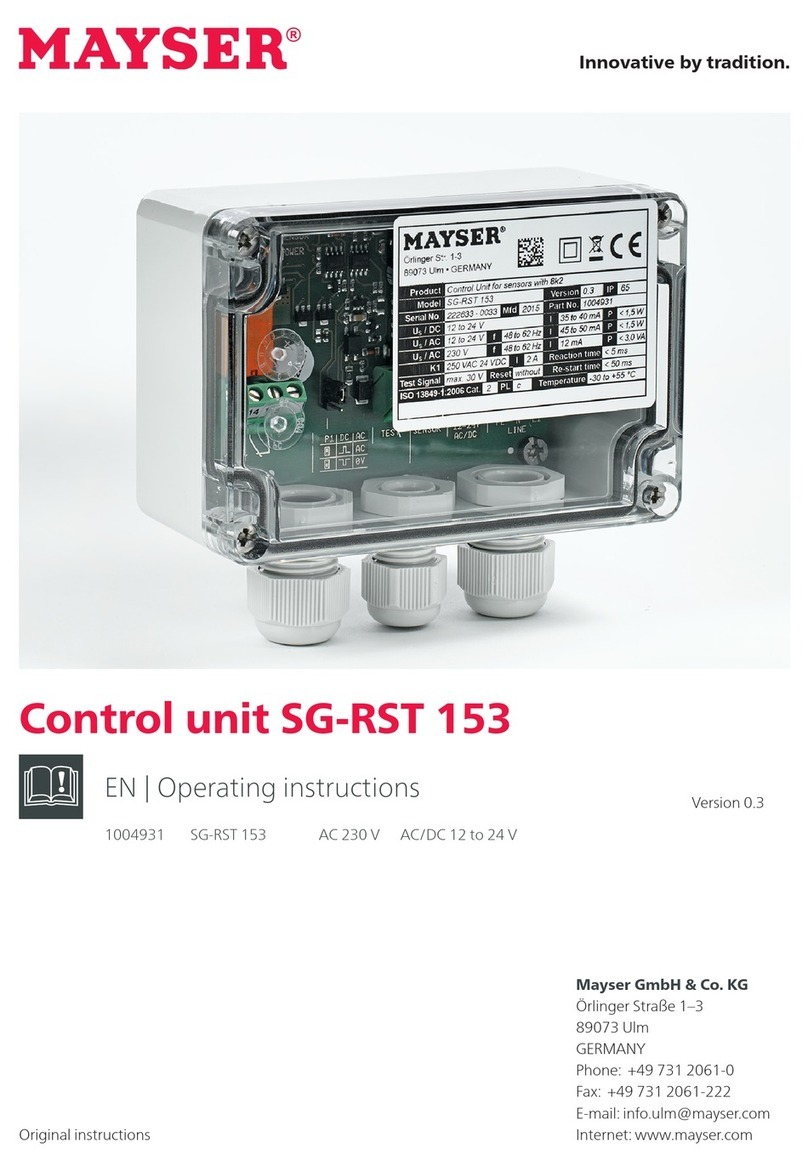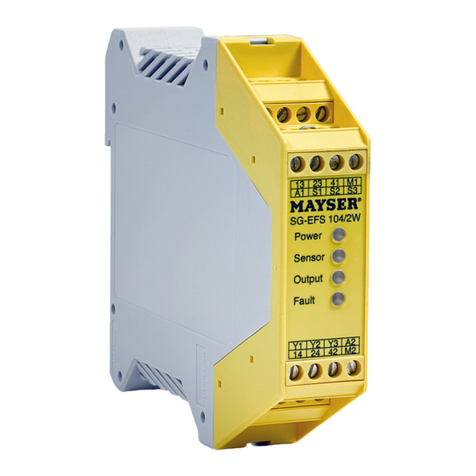
Page 2/12 Operating instructions SG-RSV 205 280513 v2.2cd
Copyright
The reproduction, distribution and utilisation of this document as well as the communication of its contents with-
out express authorisation is prohibited. Oenders will be held liable for the payment of damages. All rights reserved
in the event of the grant of a patent, utility model or design.
© Mayser Ulm 2013
Table of contents
About these operating instructions.......................................................................................................................... 3
Intended use.................................................................................................................................................................. 4
Safety instructions ....................................................................................................................................................... 4
Parts supplied................................................................................................................................................................ 5
Transport and storage ................................................................................................................................................. 5
Packaging and transport ......................................................................................................................................................5
Storage.......................................................................................................................................................................................5
Product overview ......................................................................................................................................................... 6
Connections..............................................................................................................................................................................6
Function, installation and commissioning............................................................................................................... 6
Function.....................................................................................................................................................................................6
Flowchart.......................................................................................................................................................................6
Installation................................................................................................................................................................................7
Commissioning........................................................................................................................................................................8
Testing the function...................................................................................................................................................8
Recommissioning....................................................................................................................................................................9
Automatic reset...........................................................................................................................................................9
Connection example..............................................................................................................................................................9
Maintenance and cleaning ....................................................................................................................................... 10
Maintenance ......................................................................................................................................................................... 10
Cleaning.................................................................................................................................................................................. 10
Troubleshooting and remedies................................................................................................................................ 10
Replacement parts .............................................................................................................................................................. 11
Disposal ........................................................................................................................................................................ 11
Conformity................................................................................................................................................................... 11
Technical data.............................................................................................................................................................. 12
